In recent decades, the use of dogs in conservation work has exploded. Deployed to detect things like invasive or elusive species, scat, poachers, illegal wildlife trade products, and much more, conservation dog teams are trained to aid teams in the field. With benefits like speedier searches over large areas, proven targeted detection accuracy, and ease of transport and surveying, conservation dogs also offer possibilities for enhancing other technological methods by confirming or providing results in real-time.
Conservation dog teams now provide scat, reptile, aquatic species, whale scat, and invasive plant detection, and plenty more. This expansion of use is partly due to refined training techniques that offer a broader capability in very specialized detection roles, and partly due to more people seeing the capabilities and benefits of trained dogs.
Specifically, the utilization of dogs in conservation has experienced a considerable increase in recent years as people realize what the capability brings to the field survey arena. The benefits of dogs offering enhanced detection to support surveys includes:
- Speed of search
- Covering large areas effectively
- Proven detection capability
- Calibrated on a variety of species, if required
- Accuracy in the detection of targets and ignoring similar non-target specimens
- And easy to transport to survey sites.
Whether you train, handle, use, or are interested in finding out more about conservation dogs, this is the community for you! This group is growing, so if you'd like to get started and make connections here, here are some suggestions:
- Do you have advice to share with others who are interested in trying conservation dog work for the first time? Or do you need advice on whether conservation dogs suit your work?
- Do you have resources or research to share on training or using conservation dogs?
- Do you have a case study or project update that involves conservation dogs?
- Do you have a question about how to access conservation dogs for your own work?
Your group manager is Paul Bunker. Direct message him through WILDLABS or email him here with any questions or suggestions.
Header photo: Bill, photographed by Stephanie O'Donnell
- @alexrood
- | she/her
WILDLABS & World Wide Fund for Nature/ World Wildlife Fund (WWF)
I'm the WILDLABS Communications and Community Management Associate Specialist at WWF-US





- 30 Resources
- 32 Discussions
- 8 Groups
Software Engineer


- 0 Resources
- 5 Discussions
- 10 Groups
- @carlybatist
- | she/her
Science Outreach Lead-Rainforest Connection (RFCx) & Arbimon; Ecoacoustics, biodiversity monitoring, primates, lemurs



- 69 Resources
- 285 Discussions
- 18 Groups
- @StephODonnell
- | She / Her
WILDLABS & Fauna & Flora
I'm the Executive Manager at WILDLABS.



- 152 Resources
- 668 Discussions
- 30 Groups
- @TaliaSpeaker
- | She/her
WILDLABS & World Wide Fund for Nature/ World Wildlife Fund (WWF)
I'm the WILDLABS Research Specialist at WWF-US



- 13 Resources
- 56 Discussions
- 24 Groups
Sustainability Manager for CERES Tag LTD. An animal health company; animal monitoring, conservation, & anti-poaching/ rural crime. Wildlife, livestock, equine & companion. #CeresTrace #CeresWild #CeresRanch





- 2 Resources
- 19 Discussions
- 24 Groups
Wildlife Drones
Wildlife Drones has developed the world’s most innovative radio animal-tracking system using drones so you can track your radio-tagged animals like never before.


- 11 Resources
- 8 Discussions
- 32 Groups
- 0 Resources
- 0 Discussions
- 17 Groups
Saint Louis Zoo
- 0 Resources
- 0 Discussions
- 13 Groups
- @mclapham
- | She/her
BearID Project
Conservation biologist using camera traps to develop automated methods of photoID

- 0 Resources
- 0 Discussions
- 6 Groups
- @Kungu
- | she/her
- 1 Resources
- 9 Discussions
- 3 Groups
- @YvanSG
- | he/him
Clemson University
Seabird ecologist at Clemson University, South Carolina Cooperative Fish and Wildlife Research Unit. Co-chair of Caribbean Seabird Working Group.



- 0 Resources
- 53 Discussions
- 6 Groups
WildLabs will soon launch a 'Funding and Finance' group. What would be your wish list for such a group? Would you be interested in co-managing or otherwise helping out?
5 June 2024
This article discusses a project utilizing canines to detect the scat of a critically endangered mammal, the Saola.
10 December 2023
Published paper attached
14 November 2022
Article
Ceres Tag sends just in time alerts and GPS location to have the power to track and trace.
22 July 2022
Today we're talking to Paul Bunker, owner of Chiron K9, a canine consultancy company specializing in detection, author of the workbook Imprint Your Detection Dog in 15 Days, a resource aimed at providing tools to get...
7 May 2021
December 2023
event
| Description | Activity | Replies | Groups | Updated |
|---|---|---|---|---|
| This is awesome!! Thanks for sharing. Reading about doggo's for "work" (and fun) is so lovely |
|
Conservation Dogs | 3 years 2 months ago | |
| "When presented with the challenge of detecting P. adspersus scent amid other amphibian scents (species identification test),... |
|
Conservation Dogs | 3 years 3 months ago | |
| A news article regarding the invasive North American red-eared slider turtle in Australia and the use of dogs to support conservation... |
|
Conservation Dogs | 3 years 3 months ago | |
| Benefits of incorporating a scat-detection dog into wildlife monitoring: a case study of Pyrenean brown bear. Conservation detector dogs... |
|
Conservation Dogs | 3 years 3 months ago | |
| "This issue features 14 papers from seven countries in Africa and Europe and one review paper with global coverage, focusing on dog... |
|
Conservation Dogs | 3 years 3 months ago | |
| If and when you're ready to get a ton of attention (and maybe fundraise) for your conservation dog work send those pix to @dog_rates as I'm sure Matt would love to feature... |
+11
|
Conservation Dogs | 3 years 3 months ago | |
| Check out this very helpful paper on how detector dogs were trained to conduct surveys to find the threatened Eastern Indigo Snake.... |
|
Conservation Dogs | 3 years 3 months ago | |
| This is a recording of an interview with Rogue Detection Dogs about their work: "In this webcast, we learn all about how this work... |
|
Conservation Dogs | 3 years 3 months ago | |
| I have seen posts on social media about poison detection dogs and I THINK I am connected to one of the teams. I will check. Paul |
|
Conservation Dogs | 3 years 4 months ago | |
| https://onlinelibrary.wiley.com/doi/10.1002/aqc.3531#aqc3531-bib-0028 |
|
Conservation Dogs | 3 years 4 months ago | |
| Hello Conservation Dogs group members WildTrack (wildtrack.org) has just joined WildLabs and we have a new community forum FIT (... |
|
Conservation Dogs | 4 years ago | |
| Hi Yvan, My name is Jennifer Hartman and I work with Rogue Detection Teams, a program that works with and instructs conservation detection dog teams. Did you ever receive enough... |
|
Conservation Dogs | 4 years 5 months ago |
New WildLabs Funding & Finance group
5 June 2024 3:24pm
6 June 2024 1:38am
6 June 2024 4:16am
CollarID: multimodal wearable sensor system for wild and domesticated dogs
3 May 2024 1:42am
3 May 2024 10:14am
Hi Patrick,
This is so cool, thanks for sharing! It's also a perfect example of what we were hoping to capture in the R&D section of the inventory - I've created a new entry for #CollarID so it's discoverable and so we can track how it evolves across any mentions in different posts/discussions that come up on WILDLABS. This thread appears on the listing, and I'll make you three the contacts for it too. But please do go in and update any of the info there as well!
Steph
3 May 2024 2:01pm
Hi Steph,
We appreciate the support! Thanks for the tag and your help managing the community!
Patrick
Master Project Collaboration/Ideas!
4 November 2023 10:37pm
4 November 2023 10:58pm
My email address: [email protected]
14 December 2023 9:35pm
Hi Zach,
Our organization (SEE Turtles) has a campaign working on the illegal tortoiseshell trade around the world called Too Rare To Wear. We are going to be updating our Global Tortoiseshell Report next year and one of the gaps we have in data is in China, where the illegal trade is now happening most frequently on platforms like WeChat.
We'd be interested in discussing with you if interested in how we might be able to gather some data on this trade in the country. I'm including a couple of links below about the program and the last report and will reach out by email.
-Brad
Too Rare To Wear — SEE Turtles
Too Rare To Wear is a campaign that aims to end demand for tortoiseshell products around the world.
Turtleshell Research — SEE Turtles
Too Rare To Wear has published two reports on the global tortoiseshell trade. Learn more about this trade and where it is happening.
Saola Detection Canine in Laos; an interview with the training partners
10 December 2023 3:29pm
YouTube link to interview regarding the Saola Detection Canine project in Laos
Scent Detectives: Extraordinary Partners in the Quest to Find Saola in the Wild of Laos
10 December 2023 3:25pm
AWMS Conference 2023
Insight; a secure online platform designed for sharing experiences of conservation tool use.
7 November 2023 1:01pm
A secure platform designed for those working to monitor & protect natural resources. Insight facilitates sharing experience, knowledge & tools to increase efficiency & effectiveness in conservation. By sharing we reduce time & money spent to find, test, & implement solutions.
Scent detection dogs as a novel method for oestrus detection in an endangered species, the Tasmanian devil
25 October 2023 1:02pm
Detection dogs may provide a non-invasive way to determine female receptivity, but this has not been explored in captive wildlife. This exploratory study investigated the use of detection dogs as a novel method of oestrus detection in the endangered Tasmanian devil
The Wildlife Society Conference
19 June 2023 5:59am
Researchers Using Dogs to Combat Spotted Lanternflies – NBC 5 Dallas-Fort Worth
26 April 2023 2:51pm
By sniffing out egg masses, dogs are helping researchers against an invasive species
Thinking out loud
24 November 2022 2:21am
11 February 2023 2:51am
11 February 2023 6:19pm
Thank you for this exciting reply and links to the papers. I use an olfactometer that utilizes Arduino boards. It has been used linked to a treat and train, although my system provides sound feedback and I provide the reinforcements. I found these links very interesting!
28 February 2023 7:26pm
These are great materials to refer to. I just have to wrap my amateur brain around the technological words but I should be fine. Thank you Harold.
Working with Detection Dog Teams
15 February 2023 9:49am
These Dogs Are a Bird's Best Friend | Audubon
15 September 2022 1:13pm
Nice article from Audubon showcasing a variety of conservation dog projects: 'They can turn up endangered species, track down poachers, root out invasive pests, and prevent the spread of wildlife diseases'
CERES TAG
22 July 2022 3:36am
Detection dog-team outcompetes human fieldworkers in collecting pine marten scat
1 July 2022 5:08pm
Evaluating Spotted Lanternfly Detection Dog Capability and Limits of Detection.
15 March 2022 7:28pm
Replay Conservation Canine Conference
5 March 2022 10:08pm
Detection dogs in Conservation
29 November 2021 12:44am
6 December 2021 9:24am
Thanks for sharing. We've funded research using a detection dog to succesfully find hibernating hedgehogs over winter. Wondering whether they're likely to be able to detect smaller hibernators - hazel dormice - on the forest floor?
6 December 2021 3:30pm
I would bet that yes, they are capable of it-- the question is mostly detection distance and whether it's vauable in the field. We've had similar situations with turtle nests and other difficult targets.
Do you have a few known hibernation sites that could be used to test dogs? If so, that would be a big help. Feel free to reach out to me or Alice Whitelaw ([email protected]) if you'd like to discuss in more detail.
7 December 2021 9:29am
thanks Pete, yes we're going to collect some from captive animals when they come out of hibernation. I'll keep in touch.
Conservation Canine Conference
16 November 2021 1:10am
3 December 2021 7:02pm
I'm part of a GSD rescue, so we periodically get dogs that would do well in search. I'll email you.
-Robert
3 December 2021 8:03pm
You have Leo who was one of mine for adoption. The other dogs all went to new homes.
3 December 2021 9:18pm
Thank you! I just replied via email.
News Article: These Dogs Are a Bird's Best Friend
27 November 2021 1:30am
Training methodology for canine scent detection of a critically endangered lagomorph
23 September 2021 12:49am
Online/in-person courses in detection dogs
17 March 2021 3:28pm
27 May 2021 5:52am
Thanks any others online courses related to dogs utilization?
16 September 2021 1:17pm
This class is being offered again, here's the information:
Online
DATES: December 27, 2021 - January 21, 2022
EARLY BIRD REGISTRATION ENDS NOVEMBER 10, 2021
https://www.centerforwildlifestudies.org/courses/scentdogs-online-2-2021-2022
Longevity of Scented Gauze
30 August 2021 6:33pm
3 September 2021 7:23pm
There are a number of factors to consider here:
Firstly, gauze selection and preparation.
Sample collection.
Collection of distractor/control scents
Storage to include immediate storage (mylar bags, Borosilicate glass, Mason jars etc.) and then freezer or fridge.
The best gauze is Dukal unsterilized. Rinse the gauze in Ethanol and then dry in an oven 150f for 15mins. Store all unused gauze together until ready to use.
Ensure the person collecting uses disposable gloves (not powdered or chlorinated) and changes the gloves for each gauze. Rinse the turtle with clean unchlorinated water before scent collection to remove tank water and environmental odours.
As soon as sample is collected place in Mylar bag or Borosilicate jar or whatever you are using and seal. (Do not touch the outside of container with contaminated (scented) gloves). Use stainless steel tweezers if needed.
Make sure the person prepares controls (handles gauze without collection scent) and distractors (collect various scents) in exactly the same way and store them the same.
I do not typically freeze reptile samples as the scent can be delicate. I store in the fridge. Ensure all controls and distractors are stored the same or the dogs will learn to smell the storage and not the target (I have had that happen).
Once open I typical do not use for more than 30mins (if that) then dispose. The problem is the scent cannot replicate as there is not source for the odour and it will burn off quickly depending on the climatic conditions. I have stored samples for 3 weeks without issue but once open the deteriate fast.
Hope this helps.
7 September 2021 4:06pm
Thanks Paul!
That's really helpful! I'll order some of those gauze and follow your procedure.
7 September 2021 5:25pm
Please feel free to reach out if you have questions.
Dogs & technology
27 August 2021 8:23am
27 August 2021 3:25pm
Dogs, in simple terms are a tool just like any other technology you use. There are advantages and limitations just like any other technologies. I like to tell people they need to survey in depth. This means you use as many technologies as needed to minimize any limitations in your survey. The dogs can cover most requirements but if there is a limitation that is deemed to exist in your particular situation then you bridge that limitation with technology if available.
Some surveys only require a dog team to meet the goal and some need a layered approach.
This is where a professional dog team’s advice is important. They can assist in the planning phase. You can matrix your limitations and then mitigate with the dog and if there are still gaps see if technology fits the requirements.
It should never be seen as the dog team is the final solution unless they mitigate all your limitations. Which is often, but not always, the case.
Also remembering that the human element in the dog team is just as important as the dog.
So, a simple scenario is in areas of high target concentration needing individual and exact locations. The dog may be confused by the spread of scents all over the area but give you an approximation of a location. Then the humans need to take over with, for instance at night, heat sensing technology. In this case the dog team can reduce the potential target areas by telling you there is nothing present and then give you a priority area when they say something is present. This area reduction is a huge advantage to survey large areas and reduce resources required.
Or passive cameras can be used to monitor an area for target traffic then once establish they are passing the camera the dog team can be brought in to follow up the trail or reduce the area of the potential target’s location.
Remembering also that dogs can be a platform for technology such as GPS of tracklines and waypoints of target alerts.
Rescue dogs follow their noses to protect rare species
26 August 2021 3:26am
Great Crested Newt Detection Dog (video)
22 July 2021 3:27am
Training and usage of detection dogs to better understand bumble bee nesting habitat
19 June 2021 6:12pm




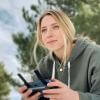























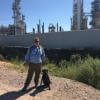
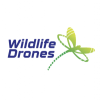

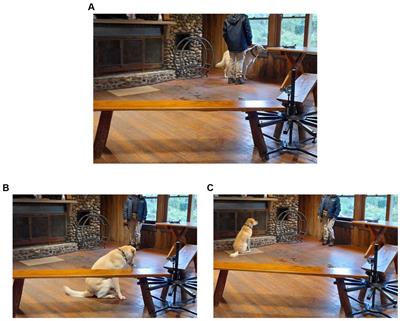





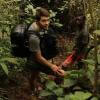
5 June 2024 4:14pm